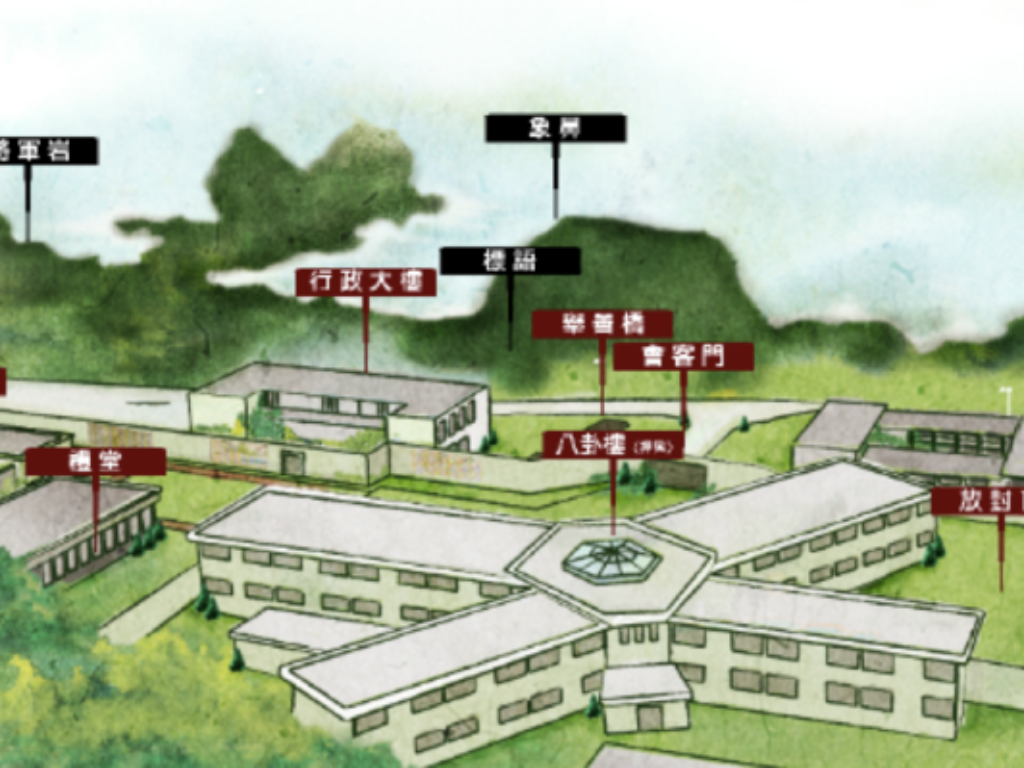The cross-shaped prison on the Island of Fire
The Green Island Correctional Prison of the Ministry of National Defense was set up between 1972 and 1987. Today, it stands at No. 20, General Rock, Gongguan Village, Ludao Township, Taitung County (the same as the site of the former New Life Correction Center of the Taiwan Provincial Security Command: No. 15, Liuma Ditch, 6th Neighborhood, Gongguan Village, currently the Green Island White Terror Memorial Park), an area of roughly two hectares. Plans to build a modern prison, the “Green Island Correctional Prison,” were made after the “Taiyuan Incident” that occurred in Taiyuan Prison in Taitung. It was constructed on the west of the New Life Correction Center that was already defunct at the time. The prison held political dissidents with heavy sentences and special cases in the 1970s and 1980s of the period of martial law.
Green Island sits in the Pacific Ocean approximately 33 kilometers east of Taitung. With a land area of merely 16.2 square kilometers, it has a population of about 2,700. Geologically, the island is made up of volcanic materials, which explains its old name “Island of Fire.” After the war, trees were planted all over the island in 1949 to make it greener, and the name was thus changed to “Green Island.” Green Island is surrounded by the sea on all sides, and because of this geographical trait, the “Island of Fire Homeless Shelter” was established here from 1911 to 1919 during the period of Japanese rule to isolate criminals. Here, the inmates raised livestock for a living and were left to their own devices.
After the war, the Nationalist Government set up three prisons and correctional facilities on Green Island:
- “New Life Correction Center”: This facility was under the jurisdiction of the Taiwan Provincial Security Command (later the Taiwan Garrison Command) and operated from 1951 to 1965. The center was located in Gongguan Village on Green Island and was also referred to as “Zhuangjing Camp.” It was used specifically to imprison political prisoners and carry out ideological reform. From 1965 to 1991 the “3rd Division of the Correctional Corps of the Taiwan Garrison Command” was set up here, which was renamed “Green Island Vocational Training Center,” also called “Jinde Villa,” from 1991 to 2002. This center was used to provide mandatory vocational training to repeat offenders.
- “Green Island Correctional Prison”: This facility was under the jurisdiction of the Ministry of National Defense and operated from 1972 to 1987. It was located to the west of the New Life Correction Center, and was also called “Oasis Village.” It mainly held political prisoners from the Jingmei Detention Center and Taitung Taiyuan Prison.
- “Lyudao Prison”: This facility is under the jurisdiction of the Ministry of Judicial Administration (later restructured as the Ministry of Justice) and has been in operation from 1972 to today. The prison is located in Zhongliao Village, Ludao Township (it has now been renamed Lyudao Prison, Agency of Corrections, Ministry of Justice) and is also referred to as “Chongde Villa.” It mainly houses criminals convicted of severe sentences and triad members arrested as a result Operation Clean Sweep and Operation Peace Bringer which targeted organized crime. The presence of these criminals is the reason why Green Island is also known as “Devil Island.”
The lost years of political victims
The Green Island Correctional Prison was a typical high-walled closed-off prison with the mountains at its back and the sea before it. The prison was called the Eight Trigrams Tower due to its radial cross-shaped design modeled on the Pennsylvania system, making centralized monitoring easy. The prison consisted of 4 two-story blocks, divided into 8 sections, each with 52 cells of varying sizes. Most of the prisoners were kept on the first floor, while the second floor was used to hold prisoners with special statuses. There were 4 yards within the prison where the prisoners could be let out of their cells. The prison was also equipped with a rehabilitation and first-aid room, solitary cells, kitchens, storage areas and isolation rooms. There was also a visiting room in the administration building.
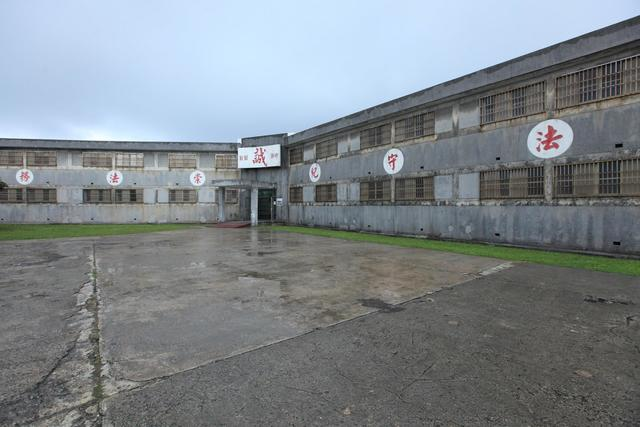
▲ Side view of the cross-shaped, radiating architecture of the Oasis Village. (Source: Taitung Tourism website)
After the completion of Green Island Correctional Prison in 1972, the first batch of more than 300 prisoners was transferred here from Jingmei Detention Center and Taiyuan Prison. Most of these political dissidents received sentences of more than five years. At its peak, more than 500 prisoners were incarcerated in the Green Island Correctional Prison. Prisoners of this facility included Kuo Chen-chun, Chung Chien-hsun, Tsai Tsai-yuan, Bo Yang, Huang Yingwu, Chen Yingzhen, Ko Chi-hua, Chen San-hsing, Chen Sanwang, Chen Mingfa, Yang Bi-chuan, Wei Ting-chao, Shih Ming-teh and Annette Lu.
During the White Terror period, the Oasis Village held prisoners from different political camps. There were “white hats” fighting for Taiwan’s independence, and “red hats” advocating socialism and Taiwan’s unification with China. Famous inmates included Bo Yang, Kuo Chen-chun, Chen Yingzhen, Ko Chi-hua etc. According to the accounts of the prisoners, each cell was about 13 square meters in size and had to hold around 10 inmates. Due to the high humidity and strong sea breeze, coupled with the lack of medical facilities, prisoners easily developed various diseases such as arthritis, and there were 54 inmates that died in the prison due to illness. “In that era, how many mothers shed tears during the long nights, for their children imprisoned on this island?” Bo Yang’s writing, inscribed on the Human Rights Memorial Plaque, is a testimony to the years victims of political persecution lost on that faraway Island of Fire.
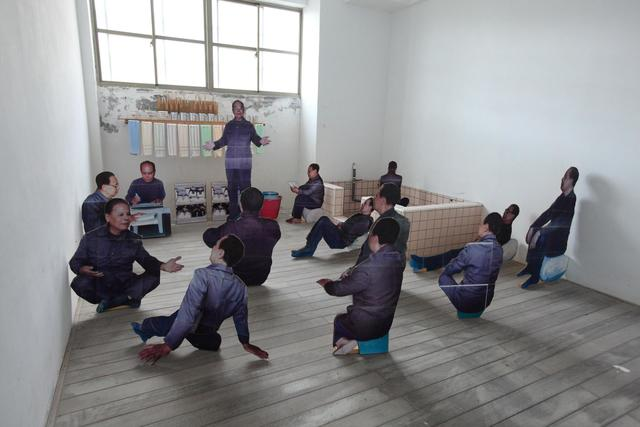
▲ Wax figures in the memorial park designed according to the sketches made by Ouyang Jianhua, one of the prisoners of the time. The figures recreate the conditions of incarceration in those days. (Source: Taitung Tourism website)
From a political prison with no regard for human rights to a memorial park with human rights at its core
In 1975, after the passing away of Chiang Kai-Shek, an amnesty of prisoners was announced, and more than a hundred political prisoners were released for various reasons and on various conditions, such as release on parole, early completion of training, and the need for medical treatment outside the prison. In 1987, when martial law was lifted, the more than 30 political prisoners still in the Green Island Correctional Prison were moved to the Taiwan Lyudao Prison in Zhongliao Village to continue serving their sentences. The Oasis Village was renamed the Green Island Prison of the Ministry of National Defense, and was placed under the jurisdiction of the Green Island Command of the Taiwan Garrison Command in 1988. On May 5, 1990, Wang Sing-nan, who was involved in a mail bomb case, was granted parole, after having served a term of 13 years and 5 months. When he stepped out the gates of the Green Island Correctional Prison, he became the last political prisoner to leave Green Island, signaling the end of the era of Taiwan's political prisoners. The Ministry of Justice took over the prison from 1997 to 2000 and named it the Oasis Branch of the Lyudao Prison.
In 1997, 16 legislators including Shih Ming-teh proposed a motion to have the Oasis Village preserved and converted into a history museum. In 2000, the Ministry of Justice transferred jurisdiction to the Tourism Bureau of the Ministry of Transportation and Communications. A Human Rights Monument was set up in 2001, and on December 10, 2002, the Green Island Human Rights Cultural Park was officially launched on Human Rights Day itself. In 2006, ownership of the park was transferred from the Tourism Bureau of the Ministry of Transportation and Communications to the Council for Cultural Affairs of the Executive Yuan (now the Ministry of Culture). The name of the park has been changed several times over the years. It gained official recognition as a cultural heritage site in the cultural landscape category in 2014. In 2018, it was officially named “Green Island White Terror Memorial Park.”
The memorial park primarily preserves the three incarceration sites used during the martial law period: the “New Life Correction Center of the Taiwan Provincial Security Command/Taiwan Garrison Command” (Zhuangjing Camp) that operated from 1951 to 1965; the “Green Island Correctional Prison of the Ministry of National Defense” (Oasis Village) that operated from 1972 to 1987; and the “3rd Division of the Correctional Corps of the Taiwan Garrison Command/Green Island Vocational Training Center” (Jinde Villa) that operated from 1965 to 2002. The park occupies an area of 32 hectares beginning from the Gongguan Nose in Gongguan Village, Ludao Township, covering areas such as the General Rock, the Green Island Human Rights Cultural Park, Zhuangjing Camp, Jinde Villa, and stretches on until the Public Cemetery of the 13th Squadron at Swallow Cave. These areas record the historical changes and the spatial transformations that form the backdrop of the development of human rights.
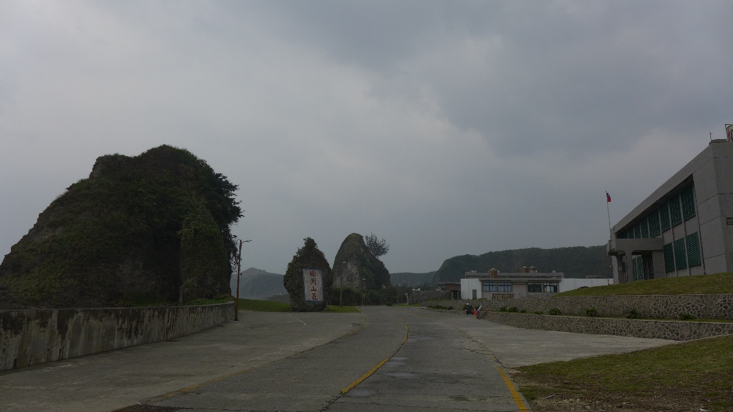
▲ Entrance to Oasis Village. (Source: National Human Rights Museum)
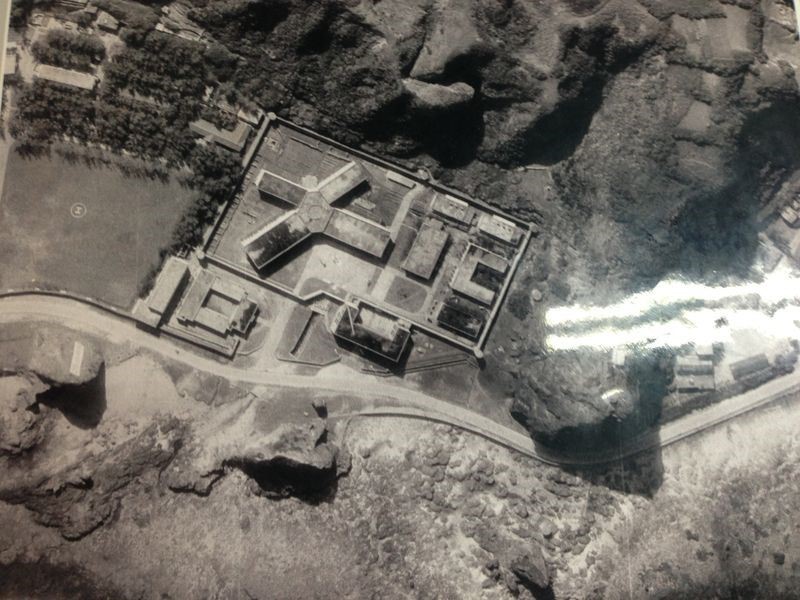
▲綠洲山莊空拍圖(出處:國家人權博物館)

